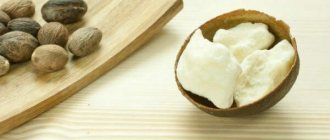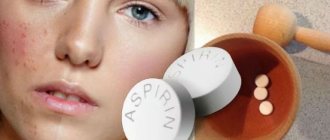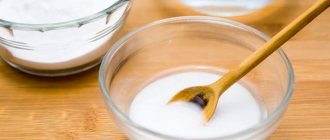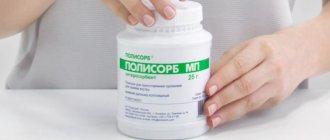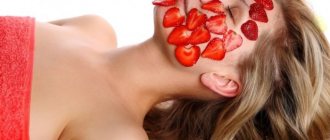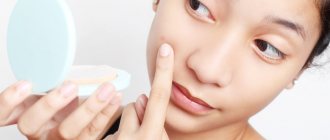A sheet mask is a relatively new stage in skin care that came to us from Japan. It was local beauty gurus who were the first to think of using pieces of fabric with slits for eyes and lips, soaked in gel or serum. By fitting tightly to the face, the mask does not allow nutrients to evaporate and ensures maximum effectiveness of the components.
Thirty years ago, in elite Japanese beauty salons, fabric masks were a whole ritual: quiet music, aromatherapy, healing composition... And today we can easily apply them to our faces and continue going about our business!
Properties of fabric masks
Let's be honest: fabric masks are the beauty heroes we've been waiting for for so long. What superpowers do they have?
- Moisturizes facial skin, fights dryness and dehydration.
- They rejuvenate and have a lifting effect.
- Evens out facial tone and eliminates dullness.
- Tones and gives the skin a natural glow.
- Intensely nourishing.
- Eliminate inflammation and redness, soothe the skin.
- Cleanses pores and mattifies.
- Restores the fat balance of the skin.
It is also important that the effect of fabric masks is visible after the first use. Therefore, they can be used as an SOS tool before an important event or date!
By the way, the best fabric face masks perform several functions at once, or even all at once.
Features of the composition
The exact effect the mask will have depends on the composition of the impregnation:
- For moisturizing - hyaluronic acid, glycerin, snail mucin, lipohydroxy acids, pomegranate extract.
- To combat redness - aloe, chamomile extract, lavender oil.
- For radiant skin - caffeine, vitamin C, centella asiatica, natural pearl extract, sakura extract.
- For wrinkles – retinol, vitamin E, peptides, collagen, algae extract, colloidal gold, EGF (epidermal growth factor), antioxidants.
- Anti-inflammatory, sebum-regulating – zinc, ginseng extract, black tea extract.
- For nutrition - natural oils.
- To tighten pores and mattify (in fabric masks for problem and oily skin) – activated charcoal, clay.
Woven base material
It’s no coincidence that fabric beauty masks are called “sheet masks” (thanks, Cap!). They differ not only in the composition of the impregnation, but also in the material from which the base is made:
- Cotton is a natural fabric with good absorbency.
- Hydrogel is a non-woven material impregnated with a gel whose consistency resembles jelly. Upon contact with warm skin, the gel begins to melt, releasing the active components of the mask.
- Microfiber – fits tightly to the face, like a second skin. Pleasant to the touch, practically does not tear.
- Biocellulose is a thin fabric that can absorb a large amount of useful substances.
- Natural cellulose is a fairly dense fabric: it sticks well to the face and does not slip off.
Benefits of using sheet masks
Perhaps one of the main advantages of a fabric mask is its ease of use. Just spread the foundation along the contours of your face, giggle at your reflection in the mirror and... that's it! What other “buns” of masks will please you?
- Does not require rinsing.
- They have an immediate noticeable effect.
- Contains useful substances in concentrated form.
- They solve almost any skin care problem.
- Maximum hygienic.
What does the last point mean? It's simple: using masks in jars, we can accidentally introduce bacteria into the composition: for example, on our fingers or by accidentally leaving the jar open. In the stuffy atmosphere of the bathroom (which is where, contrary to the advice of beauty experts, we most often store skincare products), these bacteria can multiply and cause inflammation.
In the case of fabric masks, this problem does not occur to you. In a sealed package there is exactly as much product as is needed for one procedure.
PS Do not store facial cosmetics in the bathroom!
Result
If you listen to your skin, then this care system will be ideal for you. Of course, you will have to spend 20 minutes more on care, but it is definitely worth it. Not a single experiment carried out by stars, bloggers or our editorial staff failed: the skin is truly grateful for such care. Firstly, it becomes less vulnerable to external irritants, and secondly, its sensitivity decreases and its tone increases. And even if you don’t completely get rid of wrinkles, the lifting effect will not be long in coming. But don't be fooled: this doesn't mean you don't need to watch your diet. The mask will provide freshness, radiance and mask inflammation, but the cleaner our body is from the inside, the better you look from the outside.
Fabric cosmetic masks: application features
To simplify your acquaintance with fabric masks, we have compiled a small beauty dossier on them and formatted it in a “Question-Answer” format:
How long to keep the mask on? Can it be longer?
As a rule, the mask is kept for 15 to 30 minutes (this information is always on the package). You can take longer, but... why? During the time specified by the manufacturer, the skin will have time to absorb the maximum possible amount of nutrients. It simply won’t fit anymore. By the way, this also applies to ordinary masks with a cream texture.
And one more thing: you shouldn’t leave a fabric mask on overnight. During this time, it can dry out and stick either to your face or to the pillow.
Can the mask be reused?
No, you cannot reuse the mask. You don't use the same cotton pad twice, right? It's the same here. If there is a lot of excess gel left inside the package, apply it to your neck, décolleté or arms.
When to apply the mask: morning, afternoon or evening?
A sheet mask is a universal remedy that can be used at any time of the day. The only difference is that in the morning you will need to remove the remaining mask with a cotton pad. After 15-20 minutes you can start applying makeup.
How often should you use the mask?
Some masks must be used in courses: this way the effect will be maximum. In all other cases, it is better to focus on the needs of the skin. Feeling dry? Use a moisturizing mask. Does your skin need mattification? An activated carbon mask will help you.
What precautions are there?
- It is no coincidence that fabric masks have slits for the eyes: the impregnating composition is not intended to care for sensitive skin around the eyes, so you should not smear it on this area.
- It is better to store a fabric mask in the refrigerator or cool place. Despite the sealed packaging, the impregnating composition may deteriorate if exposed to high temperatures and direct sunlight.
- Cloth masks often contain exotic ingredients that can cause an allergic reaction. Test them before use.
- Fabric masks are not recommended for use on severely irritated skin (for example, during an exacerbation of acne).
What sheet masks are the most effective?
They are all effective! But you can further increase the efficiency of any mask in simple ways:
- 10 minutes after the start of the procedure, turn the mask over to the other side.
- Turn applying a mask into a beauty ritual: turn on pleasant music, take a horizontal position and calm down. This will help relax the facial muscles and enhance the effect of the mask.
How to care for sensitive skin around the eyes?
Along with a fabric face mask, use patches or special masks for the skin around the eyes. By the way, these are in the Garnier line!
How to use a sheet mask: step-by-step instructions
Let's move from theory to practice. This beauty tutorial will be very short: just three steps to beautiful and glowing skin!
STEP 1: CLEANSE YOUR FACE
The fabric mask is applied only to clean skin. The preparation ritual includes makeup removal, cleansing gel and toner. The latter will help remove remnants of cosmetics from the face and become a conductor between the beneficial components of the mask and the skin.
STEP 2: APPLY MASK
The package with the mask should be opened immediately before use. The mask itself needs to be carefully unfolded and spread on the skin of the face. No creases or air bubbles! Special side slits will help you completely match the shape of your face.
STEP 3: COMPLETE THE RITUAL
After 15 minutes (or other time indicated on the package), remove the mask and distribute the remaining product over the skin with soft patting movements. This massage will increase blood circulation and help the skin better absorb the healing composition.
How to make it yourself (recipes)
By preparing the product at home, you can save a lot. The procedure does not require the skills of a cosmetologist and is easy to perform. Required:
- Prepare a non-colored fabric - cotton or multi-layer gauze will do.
- Cut an oval according to the shape of the face, make holes for the nose, mouth, and eyes.
- Prepare the impregnation, immerse it in a container.
- Dip the cut piece into the solution and squeeze lightly.
- Distribute evenly on face.
- Maintain the time specified in the recipe.
- Take off.
It is possible to use tablet discs as a base. In this case, the tablet must be placed in the solution and the material will straighten out within two to three minutes. There are different impregnation options for different types of dermis and problems.
For oily skin
To prepare a solution for impregnation, you will need to purchase one of the following herbal infusions:
- chamomile;
- sage;
- calendula.
Preparation: Place about two teaspoons of herbal mixture in a container, pour two hundred and fifty milliliters of water, put on fire, simmer for three to four minutes over very low heat (from the moment of boiling). Turn off the heat and set the solution aside for thirty to forty minutes. After the infusion time has passed, strain through three layers of gauze.
Application: Place the resulting solution in a shallow container, immerse the disk or fabric base for two to three minutes. Squeeze lightly. Distribute over your face, leave for ten to fifteen minutes, remove.
Result: Elimination of sebaceous shine, regulation of the level of fat produced by the glands, elimination of redness, anti-inflammatory effect.
For dry skin
To prepare a solution for impregnation, you will need to purchase loose green tea, which does not contain aromatic or other types of additives.
Preparation: Place about two teaspoons of tea in a teapot, pour boiling water in a volume equal to one glass, leave until cool.
Application: Place the resulting solution in a shallow container, immerse the disk or fabric base for two to three minutes. Squeeze lightly. Distribute over your face, leave for ten to fifteen minutes, remove.
Result: Relieving swelling, eliminating redness, moisturizing, toning effect.
For normal skin
To prepare a solution for impregnation you will need to purchase/need:
- kelp/one teaspoon;
- cow's milk/fifty milliliters;
- avocado oil/one teaspoon;
- melon seed oil/one teaspoon;
- orange oil/five drops;
- retinol acetate/five drops;
- tocopherol acetate/five drops;
- aloe juice/one teaspoon.
Preparation: Milk should not be heated above room temperature. Measure out the kelp, add milk, and set aside to steep for fifteen minutes. Heat the avocado oil and melon seeds in a water bath no higher than fifty degrees. When the kelp infusion time has expired, pour in the heated oils, vitamins, orange essential oil, aloe juice, and stir until smooth. There should be no lumps in the mixture.
Application: Immerse the disc or fabric base for two to three minutes. Squeeze lightly. Distribute over your face, leave for ten to fifteen minutes, remove.
Result: Relieving swelling, eliminating redness, moisturizing, soothing effects.
I recommend reading: Normal facial skin: how to determine, care rules, recipes for homemade masks.
Toning mask
To prepare a solution for impregnation, you will need to purchase a tonic for the appropriate type of epidermis, containing one of the components:
- hyaluronic acid;
- urea;
- allantoin;
- aloe extract;
- chamomile extract.
Preparation: Measure the required amount of tonic into a shallow container.
Application: Immerse the disc or fabric base for two to three minutes. Squeeze lightly. Distribute over your face, leave for ten to fifteen minutes, remove.
Result: Moisturizing, rejuvenating effects.
From blackheads
To prepare a solution for impregnation you will need to purchase/need:
- activated carbon tablets/ten units;
- ascorutin tablets/three units;
- gelatin/thirty grams;
- mineral water/one hundred milliliters;
- peach oil/ten milliliters.
Preparation: Measure out the gelling agent, place in a bowl, add water, stir, set aside for thirty minutes. Heat until dissolved, without boiling. Heat the peach oil to no higher than fifty degrees using a water bath. Grind the tablets. Combine the gelatin solution with tablet powder and oil, mix thoroughly until a homogeneous mass without lumps is obtained.
Application: Immerse the disc or fabric base for two to three minutes. Squeeze lightly. Distribute over your face, leave for fifteen to twenty minutes, remove.
Result: Toning, deep cleansing of the skin, refreshing, giving elasticity, restoring effect.
Korean sheet masks
Rating of the best sheet masks Garnier
Imagine, each Garnier sheet mask contains half a bottle of hydrating serum! How, then, to choose between one good product and another, which is no worse? To help you figure it out, we compiled our own rating of the best fabric face masks from Garnier and included in our top masks both for different skin types and for solving specific problems.

